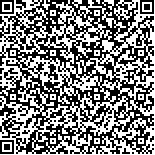下载中心
优秀审稿专家
优秀论文
相关链接
摘要

Land cover in Kenya is in a state of fl ux at different spatial and temporal scales. This compromises environmental integrity and socioeconomic stability of the population hence increasing their vulnerability to the externalities of environmental change. The Oroba-Kibos catchment area in western Kenya is one locality where rapid land use changes have taken place over the last 30 years. The shrubs, swamps, natural forests and other critical ecosystems have been converted on the altar of agriculture, human settlement, fuel wood and timber. This paper presents the results of a study that aimed at providing spatially-explicit information for effective remedial response through (a) Mapping the land cover; (b) Identifying the spatial distribution of land cover changes; (c) Determining the nature, rates and magnitude of the land cover changes, and; (d) Establishing the drivers of land use leading to land cover changes in Oroba-Kibos catchment area. Bi-temporal Landsat TM imagery, fi eld observation, household survey and ancillary data were obtained. Per-fi eld classifi cation of the Landsat TM imagery was performed in a GIS and the resultant land cover maps assessed using the fi eld observation data. Post-classifi cation comparison of the maps was then done to detect changes in land cover that had occurred between 1994 and 2008. SPSS was used to analyze the household survey data and attribute the detected land cover changes to their causes. The fi ndings showed that 9 broad classes characterize the catchment area including the natural forests, swamps, natural water bodies, woodlands, shrublands, built-up lands, grasslands, bare lands and croplands. Croplands are dominant and accounted for about 65% (57122 ha) of the total land in 1994, which increased at the rate of 0.89% to 73% (64772 ha) in 2008, while natural water bodies has the least spatial coverage accounting for about 0.6% (561 ha) of the total land in 1994, which diminished at the rate of 3.57% to 0.3% (260 ha) in 2008. Climate, altitude, access and rights to land, demographic changes, poverty, political governance, market availability and economic returns are the interacting mix of proximate and underlying factors that drive the land cover changes in Oroba-Kibos catchment area.
Land cover in Kenya is in a state of fl ux at different spatial and temporal scales. This compromises environmental integrity and socioeconomic stability of the population hence increasing their vulnerability to the externalities of environmental change. The Oroba-Kibos catchment area in western Kenya is one locality where rapid land use changes have taken place over the last 30 years. The shrubs, swamps, natural forests and other critical ecosystems have been converted on the altar of agriculture, human settlement, fuel wood and timber. This paper presents the results of a study that aimed at providing spatially-explicit information for effective remedial response through (a) Mapping the land cover; (b) Identifying the spatial distribution of land cover changes; (c) Determining the nature, rates and magnitude of the land cover changes, and; (d) Establishing the drivers of land use leading to land cover changes in Oroba-Kibos catchment area. Bi-temporal Landsat TM imagery, fi eld observation, household survey and ancillary data were obtained. Per-fi eld classifi cation of the Landsat TM imagery was performed in a GIS and the resultant land cover maps assessed using the fi eld observation data. Post-classifi cation comparison of the maps was then done to detect changes in land cover that had occurred between 1994 and 2008. SPSS was used to analyze the household survey data and attribute the detected land cover changes to their causes. The fi ndings showed that 9 broad classes characterize the catchment area including the natural forests, swamps, natural water bodies, woodlands, shrublands, built-up lands, grasslands, bare lands and croplands. Croplands are dominant and accounted for about 65% (57122 ha) of the total land in 1994, which increased at the rate of 0.89% to 73% (64772 ha) in 2008, while natural water bodies has the least spatial coverage accounting for about 0.6% (561 ha) of the total land in 1994, which diminished at the rate of 3.57% to 0.3% (260 ha) in 2008. Climate, altitude, access and rights to land, demographic changes, poverty, political governance, market availability and economic returns are the interacting mix of proximate and underlying factors that drive the land cover changes in Oroba-Kibos catchment area.

